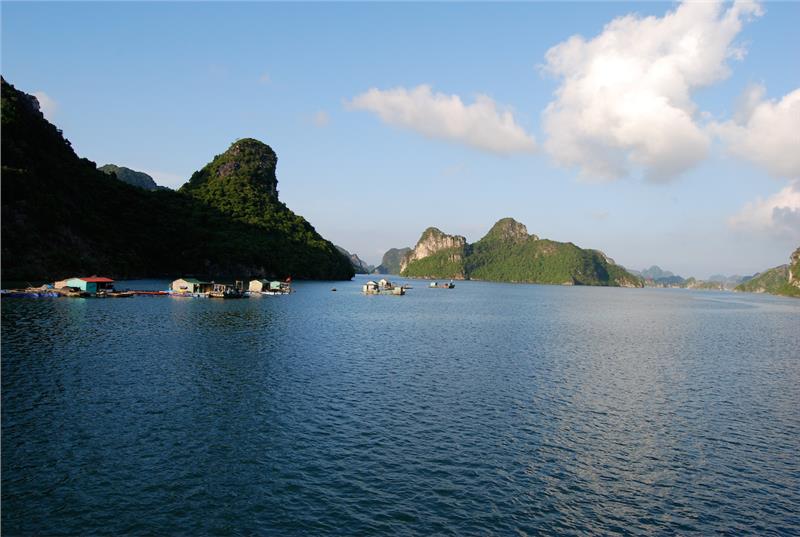Area: 271.95 sq. km
Administration: Ha Khanh, Ha Lam, Ha Trung, Ha Phong, Ha Tu, Hong Hai, Cao Thang, Cao Xanh, Yet Kieu, Tran Hung Dao, Bach Dang, Hong Gai, Bai Chay, Hong Ha, Ha Khau, Gieng Day, Hung Thang, Tuan Chau, Viet Hung, Dai Yen
Halong is one of four big cities of Quang Ninh province. The city is situated along the coast of Halong Bay with the coastline of 50 km. The city shares borders with Cam Pha City in the east, Quang Yen town in the west, Hoanh Bo District in the north and Halong Bay in the south. Halong is far from 165 km to the west of Hanoi, 60km to the southeast of Hai Phong City, and 184 km to the northeast of Mong Cai border gate.

Halong is one of the oldest region in Vietnam. Halong terrain is pretty diverse and complex including hills, valleys, coastlines, and marine islands. In details, the city is divided into three distinct areas which are hills and mountains (covering the north and northeast of the city), coastlines (in the south of 18A Highway), and islands. The hilly and mountainous areas account for 70% the total area of the city. This region has the average height from 150 - 250 meters (with the highest peak of 504 meters) lasting from Yen Lap to Ha Tu. The mountains and hills are gradually lower towards sea with the average slope of 15 - 20%. The second type of Halong topography is the coastlines in the south of 18A Highway having the average height of 0.5 - 5 meters. The last one is a cluster of islands including many small and large islands, which mainly are rocky islands. Geological structures of the city mainly are gravels, cobbles, and sands. The structure is quite stable and has high load capacity of 2.5 to 4.5 kg/cm2.

Halong City has the coastal climate with two distinct seasons including winter and summer.
Temperature: The annual average temperature of Halong Bay is 23.7°C. Winters often start in November and finish in April with the average number of 16.7°C. The lowest temperature in winters reaches 5°C. Besides, summers often last from May to October with the average number of 28°C. The highest temperature in summers is 38°C.
Rainfall: The annual average rainfall of Halong is 1832 meters, which is unevenly distributed in two seasons. In summers, the city has rains from May to October accounted for 80 - 85% the total annual rainfall. The highest rainfall is in July and August, about 350 mm. Winters are dry seasons having less rains than summers with the rainfall proportion of 15 - 20%. The lowest rainfall is in December and January, approximately 4 - 40 mm.
Humidity: The average humidity of air is 84%. Besides, Halong weather has two types of wind including the northeast winds in winters and the southwest winds in summers. Halong is an enclosed sea; therefore, the city is less influenced by hurricanes. The strongest wind in storms is usually in level 9 or level 10.

Halong river system has four main rivers including Dien Vong, Vu Oai, Man, and Troi. These four rivers flow into Cua Luc Bay and then flow out Halong Bay. The city also has a plenty of streams in the southern slopes which belong to Hong Gai, Ha Tu, and Ha Phong communes. Both rivers and streams in Halong are quite small and short with less water flow. Because of the steep terrain, the rivers and streams flow in and out very fast.
Tidal system of Halong is directly affected by the diurnal tide of the Gulf of Tonkin with the average tidal amplitude of 3.6 meters. The water temperature of the average sea surface is 18 - 30.8oC. Besides, the average salinity of seawater is 21.6% (in July) and the highest number is 32.4% (in February and March).
